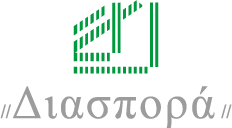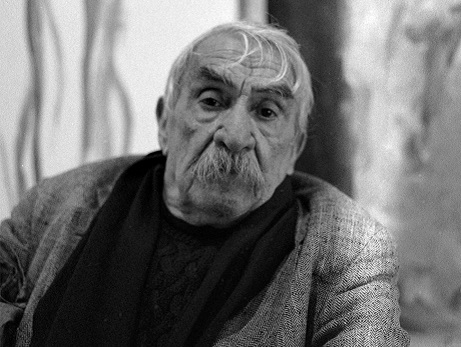Biographie
Theodoros Stamos est né à New York en 1922 d’une famille d’immigrés grecs composée de huit personnes. Il s’est tourné vers l’art dès son adolescence et, en 1936, grâce à une bourse qu’il a complété alors qu’il travaillait comme mannequin et opérateur d’ascenseur, il a suivi des cours du soir en sculpture à l’American Artists School. C’est là qu’il a rencontré Joseph Solman qui lui a conseillé de se tourner vers la peinture. Au cours des années suivantes, Stamos s’est consacré à l’étude de la peinture tout en gagnant sa vie de diverses manières, mais principalement comme fabricant de cadres de 1941 à 1948. Il est entré en contact avec de grandes personnalités de l’avant-garde américaine et européenne qui vivaient à New York durant cette période, telles que Barnett Newman, Mark Rothko, Arshile Gorky et Fernand Léger. En 1943, il a tenu sa première exposition personnelle à la galerie et librairie Wakefield, propriété de la marchande d’art historique Betty Parsons, avec laquelle il a continué de collaborer jusqu’en 1957. Milton Avery et le primitivisme d’Henri Rousseau ont influencé ses premières œuvres et, depuis le milieu des années 1940, il s’est orienté vers un biomorphisme d’origine surréaliste. En 1948-1949, Stamos a voyagé en Europe et, au milieu de la guerre civile grecque, il s’est rendu pour la première fois en Grèce. Il a passé beaucoup de temps en France où, avec l’aide de Christian Zervos, il s’est familiarisé avec la communauté artistique et avec des personnalités telles que Pablo Picasso, Alberto Giacometti et Constantin Brâncuși. Depuis le début des années 1950, Stamos a fait ses premiers pas abstraits en incorporant des éléments de peinture gestuelle avec des références à la calligraphie orientale qui l’ont progressivement conduit à ses champs de couleurs caractéristiques. En 1950, il a enseigné à Black Mountain College, tandis que lui et 17 autres artistes ont participé au mouvement de protestation d’artistes contre le jury du Metropolitan Museum of Art. Le groupe informel comprenait notamment Mark Rothko, Jackson Pollock, Robert Motherwell, William Baziotes, Barnett Newman, Clyfford Still et Willem de Kooning, et est entré dans l’histoire sous le nom de The Irascible Eighteen (Les dix-huit irascibles). De 1958 à 1970, Stamos a collaboré avec la galerie André Emmerich. En 1970, il s’est installé à Lefkada et commencé à travailler sur sa série caractéristique Endless Fields (Champs à perte de vue), dont la première a été présentée à la galerie Marlborough à New York en 1972. Sa carrière artistique montante a été interrompue la même année lorsque le scandale Rothko a éclaté : à la suite du suicide de Mark Rothko en 1970, ses gestionnaires d’actifs, dont Stamos, se sont retrouvés impliqués dans un différend juridique multiforme entre les héritiers de l’artiste et la galerie Marlborough. Bien qu’il ait été sans aucun doute l’un des pionniers de l’expressionnisme abstrait, l’issue négative du procès a considérablement réduit sa popularité aux États-Unis. Il a continué à exposer à New York en collaborant avec les galeries Louis K. Meisel et Kouros, mais également en Europe et en Grèce. Ses œuvres se trouvent dans des collections de grands musées tels que le Metropolitan Museum of Art, l’Art Institute of Chicago, le Whitney Museum of Art, le Smithsonian American Art Museum, le MoMA aux États-Unis et le Museum Moderner Kunst à Vienne. En 1975, il a fait un don important à la Pinacothèque Nationale d’Athènes-Musée Alexandros Soutsos. Il est mort à Ioannina en 1997.


